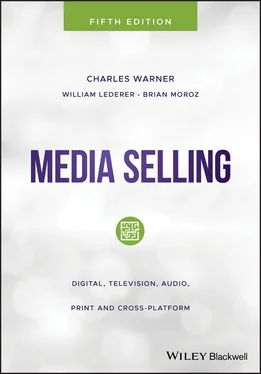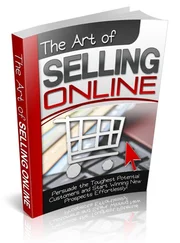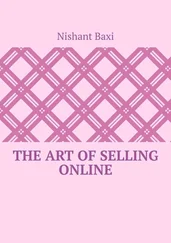In 2015 Ben Thompson in his “Stratechery” newsletter articulated aggregation theory, a concept that explained the phenomenal success of digital‐era companies such as Google, Facebook, Amazon, Netflix, Snapchat, Uber, and Airbnb. Thompson wrote:
First, the Internet has made distribution (of digital goods) free, neutralizing the advantage that pre‐Internet distributors leveraged to integrate with suppliers. Secondly, the Internet has made transaction costs zero, making it viable for a distributor to integrate forward with end users/consumers at scale.
This has fundamentally changed the plane of competition: no longer do distributors compete based upon exclusive supplier relationships, with consumers/users an afterthought. Instead, suppliers can be aggregated at scale leaving consumers/users as a first order priority. By extension, this means that the most important factor determining success is the user experience: the best distributors/aggregators/market‐makers win by providing the best experience, which earns them the most consumers/users, which attracts the most suppliers, which enhances the user experience in a virtuous cycle. The result is the shift in value predicted by the Conservation of Attractive Profits. 25
Previous incumbents, such as newspapers, book publishers, networks, taxi companies, and hoteliers, all of whom integrated backwards, lose value in favor of aggregators who aggregate modularized suppliers – which they don’t pay for – to consumers/users with whom they have an exclusive relationship at scale. 26
Customers Versus Consumers
You have been reading about “customers” and “consumers,” and the two terms seem to have been used almost interchangeably. It is time to clear up any confusion and accurately define the terms: a customer buys a product; a consumer uses a product. Consumers on the Internet are often referred to as users. Sometimes a customer and a consumer are the same person, for example, when a man buys an electric shaver for himself and uses it. Sometimes they are different people, for example, when a teenager says she wants an iPhone and her mother buys it for her. Proctor and Gamble (P&G) year after year is the world’s largest advertiser; P&G’s customers are retailers such as Walmart and their consumers are people who buy Crest. By advertising to consumers and creating demand for Crest, P&G pulls the product through the distribution system. Some manufacturers do not advertise their products but sell them to wholesalers who then sell the product to retailers and, thus, push products through the distribution system. In the media business, the customer is the advertiser and the consumer is the user, viewer, reader, or listener.
In today’s marketing ecosystem, many companies, such as Facebook, are referring to customers as partners, and this trend toward partnership selling will be discussed more thoroughly in Chapter 2.
You will also find a more detailed discussion of marketing in Chapter 15and of advertising in Chapter 16because media salespeople must have a deeper understanding of marketing and advertising than is provided here in this introductory section in order to be effective problem‐solvers and solutions sellers for the media.
“In a non‐state‐run economy advertising is the bridge between seller and buyer.” 27 This quote by media writer Ken Auletta in Frenemies defines advertising perfectly and concisely. Theodore Levitt also explains branding advertising well. Levitt changed the direction of marketing with his 1960 article “Marketing myopia,” and he changed the perception of branding advertising 10 years later with his article “The morality (?) of advertising.” Levitt wrote that, “In curbing the excesses of advertising, both business and government must distinguish between embellishment and mendacity.” He presents a philosophical treatment of the human values of advertising as compared with the values of other “imaginative” disciplines. 28
Levitt defended advertising against critics who would constrain advertising’s creativity, who want less fluff and more fact in advertising. Many critics of advertising come from: (1) high‐income brackets in business and government whose affluence was generated in industries that either create advertising (advertising agencies) or distribute it (the media), (2) industries that have grown through the use of effective advertising, or (3) by using advertising to promote themselves (politicians). Thus, advertising’s critics must look carefully at their own glass houses when throwing stones at advertising.
Furthermore, advertising’s critics, Levitt claims, often view the consumer as a helpless, irrational, gullible couch potato, which is far from the truth, especially in a digital age when consumers often have more product information than sellers do. As David Ogilvy, the advertising genius and practitioner par excellence, wrote to his advertising agency copywriters in his book, Confessions of an Advertising Man , “the consumer is not an idiot, she’s your wife.” 29 Obviously, when Ogilvy made the comment in 1963, most copywriters were men, which is no longer the case.
Levitt, too, believed that “most people spend their money carefully” and are not fooled by advertising’s distortions, exaggerations, and deceptions. He writes that rather than deny that distortion and exaggeration exist in traditional branding advertising, these properties are among advertising’s socially desirable purposes. Levitt goes on to say “illegitimacy in advertising consists only of falsification with larcenous intent.” Levitt’s thesis is that branding advertising is like poetry, the purpose of which is “to influence an audience; to affect its perception and sensibilities; perhaps even to change its mind.” Branding advertising, like art, makes things prettier. “Who wants reality?” Levitt asks. When most people get up in the morning and look at reality in the mirror, they do not like what they see and try to change it by shaving, using hair gel, or applying makeup. These things give people hope that they will be better accepted, more attractive and, thus, happier. They aspire to a better version of themselves. The goal of the poet, the artist, and the composer are similar to the goal of most ads – creating images and feelings. Much advertising, especially on television and in video, is about feelings and emotions. It is about trying to make people feel good about a product. Levitt writes that, “Advertisements are the symbols of man’s aspirations.” 30 So, Madison Avenue (as the advertising industry is often referred to), like Hollywood, is selling dreams, and dreams and hope are essential to people’s well‐being.
In the digital era Google extended the definition of advertising to include search, or keyword, advertising, and Google’s search advertising is primarily direct‐response advertising, which is different from branding advertising, which sells the dreams mentioned in the paragraphs above. Direct‐response advertising tries to close a sale or a transaction in real time. Branding advertising, on the other hand, invests in building brand equity and attempts to establish a brand’s value proposition in consumers’ minds. The return on direct‐response advertising investment will often occur immediately with a click and a sale, the return on branding advertising investment will take longer, sometimes years, to pay off.
However, both types of advertising can develop demand for goods and services, and, as mentioned above, consumer demand drives the economy. Furthermore, the Internet reduces the cost of distributing digital goods and reduces the transaction costs to buy goods. Therefore, advertising can be a major contributor to reducing manufacturing costs, search costs, distribution costs, transaction costs, and, thus, ultimately, retail prices for goods. Many products such as personal computers and eyeglasses steadily come down in price as the market for them grows larger and as manufacturing, distribution, and transaction savings are passed on to consumers in the form of lower prices. Consumers get information about reduced prices and increases in features and value through both direct‐response and branding advertising.
Читать дальше












